"Huizhou Wenmai · Creative" hides the "Nine Hall and Eighteen well", the century -old village is waiting for the butterfly change
Author:Yangcheng Evening News Yangche Time:2022.09.17
Coordinated planning/Yangcheng Evening News all -media reporter Ma Yong Chen Xiaopeng
Text, Figure/Yangcheng Evening News reporter Chen Liyuan correspondent Zeng Shili
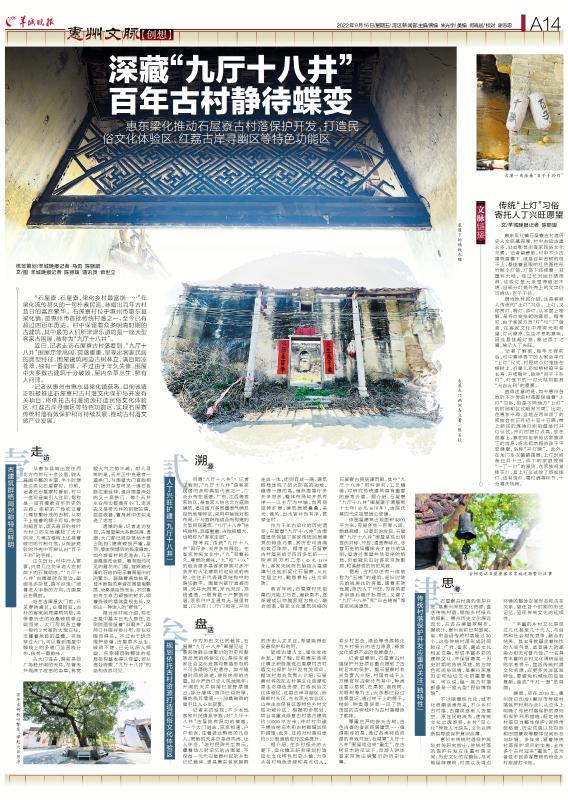
"Shiwu 石, Shiwu, Liang Hua's richer in the countryside ..." A simple folk folk song circulating in Liang Hua for a long time, chanting the rich and prosperity of the past century -old villages. Shiwu Village is located in Lianghua Town, Huidong County, Huizhou City. It is one of the first traditional villages in Huizhou City. It has a history of more than 400 years. There are many ancient buildings in the Ming and Qing dynasties in the village. Among them, the most people talked about is a large Hakka ancient enclosure house, known as the "nine halls and eighteen wells".
Recently, the reporter visited the ancient village of Shiju Liao, and saw that the "nine -halls and eighteen wells" fence hall halls were high and courses, showing the typical characteristics of Hakka houses. Charm. However, due to the years of disrepair, most of the ancient buildings in the enclosure were very rigid, and the weeds inside the house were clustered, and few people asked.
The reporter learned from Lianghua Town, Huidong County, Huizhou City that the town is currently actively promoting the cultural protection and development of ancient villages in Shiju Village. Functional areas to achieve effective protection and sustainable development of the traditional villages of Shijuyu, and promote the development of the cultural tourism industry in ancient villages.
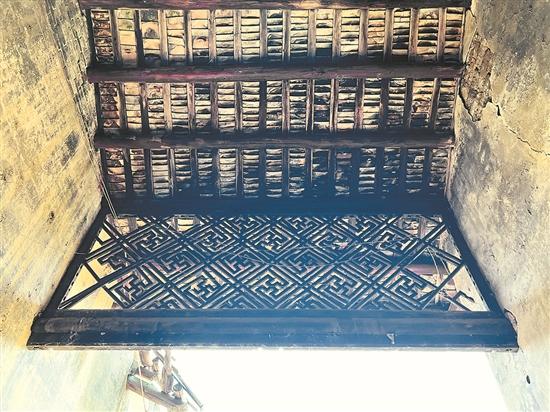
Visiting: The symmetrical characteristics of the ancient building complex are distinctive
Starting from Huidong County to the northwest more than ten kilometers northwest, drove into a wide and flat township road, and arrived in Lianghua Stone House Village half an hour. A few days ago, the reporter saw at Shiwu Village that a Guanyin Temple at the village entrance was noticeable, which is said to be an ancient temple with hundreds of years. There are several leafy trees in front of the square in front of the temple. The brands hanging from the trunk can be seen that the tree is over 100 years old. There are also shabby bamboo lanterns, which can recognize the words "Hundred Sons and Thousand Suns" from the incomplete mottled shell.
At noon, there were very few pedestrians in the village, and only a few old people in the flowers were cold under the shade of the tree. "The ancient enclosure of the" Nine Hall and Eighteen well "is next to it. There are a lot of weeds in it. The road is not easy to go!" Following the direction of the old man's fingers, Guwei House was close to his eyes.
Standing in front of the gate of Guwei House, I saw the blue brick tiles, the white wall mottled, and the quaint Hakka residential architectural style, with the historical vicissitudes of ruins. There is a marble pillar of about 3 meters high on both sides of the gate, supporting the broken eaves. The sight passes through the door, and you can see that the multiple doors on the axis in the middle of the house are distributed in a straight line, which is unique.
Entering from the door, a broad patio is like a square. Although the patio is covered with dense weeds, its spacious atmosphere does not decrease. What is intriguing is that there is a arch in the center of the patio, which is straight from the gate of the fence. A slate road extends in the weeds to extend a slate road and lead to another arch deep into the fence. There are small doors on the left and right sides of each patio. When you walk in, there is a chic courtyard with patio with a patio.
Unfortunately, the reporter visited and found that most courses, channels, and doors in Guwei House have been blocked by weeds and withered wood. The building is severely damaged. It's hard to visit the whole picture. Only the faintly visible carved door lintel and the smooth stamped stone bricks still show the prosperity of the old house. Steading on the ground, the sound of the branches and wood fractures fluttering in the fence, and the vicissitudes splitted. From time to time, I saw a stubborn tree with vitality. "".
According to local villagers, there is basically no one in the ancient house, and the "double eye" is retained on the right courtyard. However, due to the lack of maintenance and repair, the grass and trees of the ancient house were overwhelmed, and there was no deeper exploring. Fortunately, the overall structure structure of the building complex is basically retained. If overlooking from a high place, the structure of the "Nine Line and Eighteen well" is still visible.
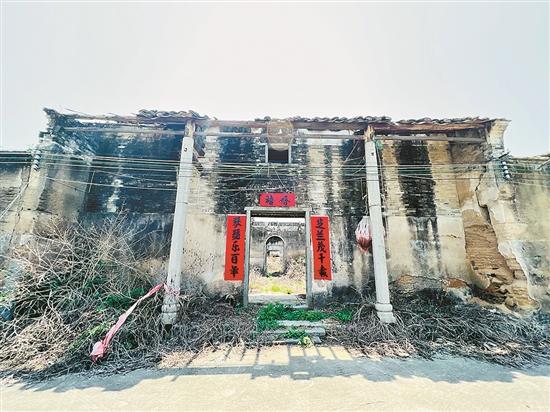
Tobbing: People Ding Xingwang and Expansion, "Nine Hall Eighteen wells"
What is "Nine Hall and Eighteen well"? The reporter learned that "Nine Hall and Eighteen well" is one of the many typical representatives of Hakka residential houses. It is widely distributed in Hakka areas such as Fujian, Guangdong, Jiangxi and other Hakka regions. Features, large residential buildings constructed by the mid -axis symmetrical layout, the union of the hall and the courtyard. The "Nine Line and Eighteen well" has a unique structure, a heavy courtyard, and a large scale, and is also known as the "Hakka Manor".
According to sophistication, the traditional "nine -halls and eighteen wells" are named after many halls and patios. In the traditional Hakka traditional culture, "Nine" has a long -term and distinguished meaning. The combination of "nine" and "eighteen" is more of the collective name of the Hakka groups of the multi -hall and well -well buildings. Expert number. The inside of the inside of the enclosure is high, wide, wide, large and wide, with sufficient lighting and transparent vision. Generally, dozens of households gather in the family. It is connected to one, and it is self -contained. The architectural pattern reflects the function of fire prevention and theft. It is worth mentioning that although there are many more and more houses in the enclosure hall, the overall layout is orderly -the main hall is the middle shaft, extending to the sides, the building layers of layers, and the lighting, ventilation, and water out of the water are well. Preface, running through the village.
As the historical relic of the millennium ancient beam, the ancient enclosure of the "Nine Line and Eighteen well" in Shijuyu obviously retains the characteristic elements of the traditional Hakka residential buildings, and its history can be traced back to hundreds of years ago. According to research, the ancient village of Shijuyu was formed more than 400 years ago -Ming Shenzong Wanli (1574 AD), and the ancestor of the Hakka ancestor Chen migrated from Zhangzhou, Fujian to Lianghua Stone House. , Give the family. For hundreds of years, the ancestors of Shiju Village have gathered in the four -way craftsman, planting fruit and wood, and gradually built the Shiwu Liao ancient house building complex with the clan family as the core and the Hakka cultural architectural style. Pay attention, exquisite craftsmanship, and has important reference value for studying traditional buildings. According to reports, the "Nine Hall Eighteen well" enclosures in Shijuyu were built in the seventeenth year of Kangxi (AD 1678) in the Qing Dynasty.
The hut building covers an area of 4,800 square meters, with a total of 108 houses, which is quite large. The reporter visited and found that the "nine halls and eighteen well" fence of Shiwuyu showed obvious characteristics, openness, and transparent characteristics. Although the historical wind and frost wiped out the gorgeous of the past, the orderly pattern of the enclosure of the enclosure, the orderly pattern of the market, and the orderly pattern of the wells, and the orderly pattern. You can still see the historical style of the Hakka clan settled, harmonious and comfortable.
It is reported that there is also a building called the "Fifth Floor" in the ancient village. It is a house where the ancestors of the Chen family lived in the old days. With the development of the family, the Chen family was prosperous. Hakka residential buildings such as Jiudi Eighteen Wells and Nikkou Pavilion.
Event: Planning to build a folk cultural experience zone relying on the resources of ancient villages

As a carrier of history and culture, the "Nine Hall Eighteen well" enclosures in Shijuyu witnessed the history of the Hakka group migration and the folk culture of the cluster. Essence Today, with the passage of time, the once lively ancient house, now it has entered the years of the wind candle: the open patio courtyard has been invaded by weeds, some walls and roofs have collapsed, and the vicissitudes of vicissitudes are made ... Lonely.
The reporter's interview found that many local Hakka villagers love clan and have deep emotions for the ancient house of "Nine Halls and Eighteen wells". "A door is in, every family is connected, and the households are connected. They live in hundreds of people who are familiar with each other. The spacious patio is always very lively and makes people miss." Mr. Chen, an old villager, said that he hid the ancient encirclement of his childhood memory. The house is not only the nostalgia memory carrier of a generation of Shiwu villagers, but also the historical and humanistic testimony of Huidongke's family groups. It hopes to be properly protected and utilized.
Continuing the ancient construction of ancient buildings and retain the nostalgia. It is understood that at present, Lianghua Town, Huidong County is actively promoting the cultural protection and development of ancient villages in Shiju Village. According to the relevant person in charge of the village, Ishiya Village will rely on the cultural resources and original green resources of the ancient villages to create a folk cultural experience area, Honglian Anyou District, low -carbon new village community, ecological tourism agricultural area, mountain forest ecological conservation District and other characteristic rural cultural tourism function areas. According to the preliminary planning, the project will focus on repairing about 10,000 square meters of ancient buildings in ancient villages, and increase protection measures for more than a thousand ancient trees and ancient trees in the village; Essence
According to reports, under the tide of rural rejuvenation, Lianghua Town is studying and planning to build a historical town of Lianghua cultural characteristics, and strive to cut in from the characteristics and highlights of various villages, and transform rural antiques and green resources into the source of vitality of rural revitalization. Release the development potential of the cultural tourism industry.
The reporter noticed that the protection and development project of the ancient village of Shiwu Liao mentioned the protection of ancient trees. According to the relevant person in charge of Ishimoyu Village, there are thousands of centuries -old trees in the village. The types are mainly based on banyan trees, mango trees, lychee trees, and longan trees. The information of the brand, the age, the type, and the type are clear at a glance. The dense ancient tree branches and leaves add charm to the ancient villages.
The thick and solemn towering ancient trees, antique Hakka residential buildings ... It is worth looking forward to. Through the effective development of various specialty resources, the "nine halls and eighteen well" fence will usher in the ancient tree name. Under the testimony of Mu, to the tourists about the historical past of the Hakka clan relocated and reproduced.
Thinking: The protection and development of traditional villages should focus on "uniqueness"
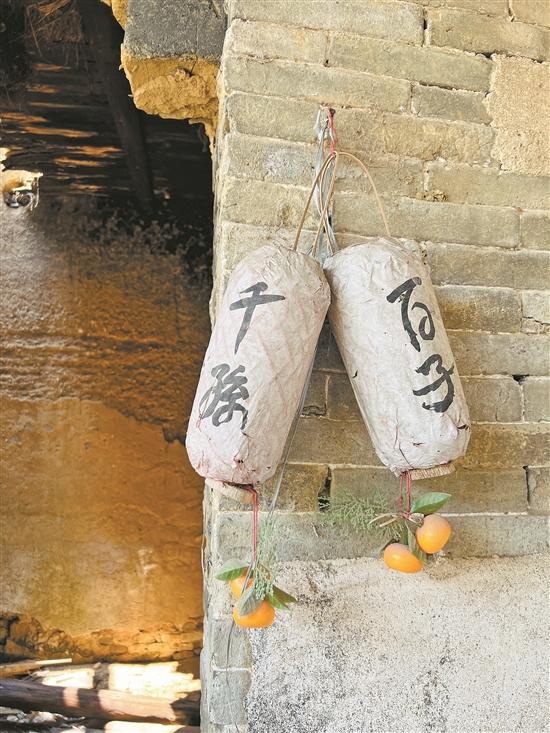
The protection and development of the ancient village of Shijuyu is the epitome of Huizhou deeply digging cultural resources, revitalizing traditional villages, and empowering rural revitalization. Huizhou has a long history and culture, and ancient monuments are tapped. According to statistics, Huizhou currently has more than 30 traditional villages at all levels in the country, provinces, and municipalities. These traditional villages have been formed earlier. The traditional style, local characteristics and folk customs of the historical period are important carriers of Huizhou's deep historical and splendid culture. It can be said that every ancient village looks like a large "folk museum".
However, with the turbulent wave of modernization and urbanization, many ancient villages and ancient buildings gradually went to the house. The loss of the Aboriginal people has moved the soul of traditional culture, the "hollow" of the countryside has led to lack of talents, and cultural identity breaks have caused a weak sense of protection.
Related research on the protection planning of traditional villages in Huizhou pointed out that the protection and development of traditional villages should pay attention to the integrity of village space, historical and cultural and culture, and maintain the overall space form and internal relationship between the building, the village, and the surrounding environment. , Present the continuity of traditional culture. "Rich rural culture is a result of several generations or even dozens of generations, and the result of competing and integrating with nature and society. It itself contains enthusiastic ethics, with strong appeal and irreplaceable." A person Scholars with rich experience in rural cultural research said that revitalizing the cultural resources of traditional villages should pay more attention to their uniqueness, avoid mechanical experience to copy, and cause the "Qiancun side" situation.
It is reported that as early as 2016, Huizhou has issued the "Measures for the Protection and Utilization of Traditional Villages in Huizhou City", which generally clarifies the principles and protection and utilization measures of traditional villages. Natural and rural landscapes and other overall space forms and environment. Over the years, with the implementation of the traditional village protection projects, many ancient villages in the city have ushered in "rebirth" and have become characteristic rural tourism punching places favored by citizens and tourists.
【Wenmai Story】
Traditional "Lantern" custom trustee Ding Xingwang's wish
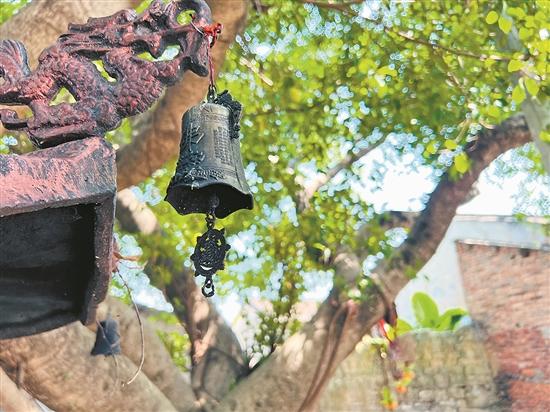
Text/Yangcheng Evening News all -media reporter Chen Liyuan
The historical and cultural heritage of the ancient villages in Shiju, Lianghua Town, Huidong Lianghua, has many ancient ancient buildings in the village, and shows Hakka folk cultural elements everywhere. The reporter noticed that many ancient buildings in the village or the branches of the century -old trees were hanging with conspicuous red cylindrical bamboo lanterns, and a pair of plastic large oranges were hung under the lantern. After a long time of sun and rain, most of these lanterns look dilapidated, but the text on some lantern shells can still be recognized: a hundred sons and thousand grandsons.
According to local villagers, this is the traditional "upper light" custom of Hakkas. On the lamp, also known as the lamp, the lighting, and the lamp, the literal understanding means hanging the lantern. According to sophisticated, due to the Hakka dialect "Lantern" and "Ding", the Hakka culture has the meaning of light hope, lighting, and endlessness in the Hakka culture.
The reporter learned that before and after the Lantern Festival every year, the people in the village who liked the male Ding will hold the "lamp" ceremony. The villagers hang the small lantern on the banyan tree and pray that the children and grandchildren are like banyan trees and longevity and spreading leaves. "Bai Zi Qian Sun Lantern", a pair of big oranges under the lantern took its "great luck" vision.
It is worth noting that many traditional villages in Huizhou now retain the custom of "upper lights", but the time and ritual of "lamps" in different places are slightly different. For example, in Huidong Pinghai, the local family in the local area will bring the newly bought kerosene lamps on the 10th to 15th of the first month of the first month. On the sink, it is intended to convey the information of the family to the ancestors, and pray for the ancestors to bless their children's peace and health, commonly known as "opening the lights late". In addition, in the Heweiwei of Hehu Lake in Yonghan Town, Longmen, the lamp time is the thirteenth month of the first month. Tim Ding's family hangs lanterns in the family ancestral hall according to the principle of "one ding and one lamp". He is very festive and lively.
Source | Yangcheng Evening News · Yangcheng School
Responsible | Chen Yueyue
- END -
In 2022, Shijiazhuang City's undergraduate public fund recruitment recruitment work was successfully concluded
Ji Shi client reported (Du Yanqing Wang Yan, a correspondent of Du Yanqing Wang Yan, Hebei) In order to expand the channels for the training of rural teachers and actively promote the revitalization o
"Shanghai Cooperation Organization: History, Status, and Prospects" round table meeting was held in Beijing

China Youth Network, Beijing, July 1st (Reporter Yang Yue) On June 29, the 15th an...